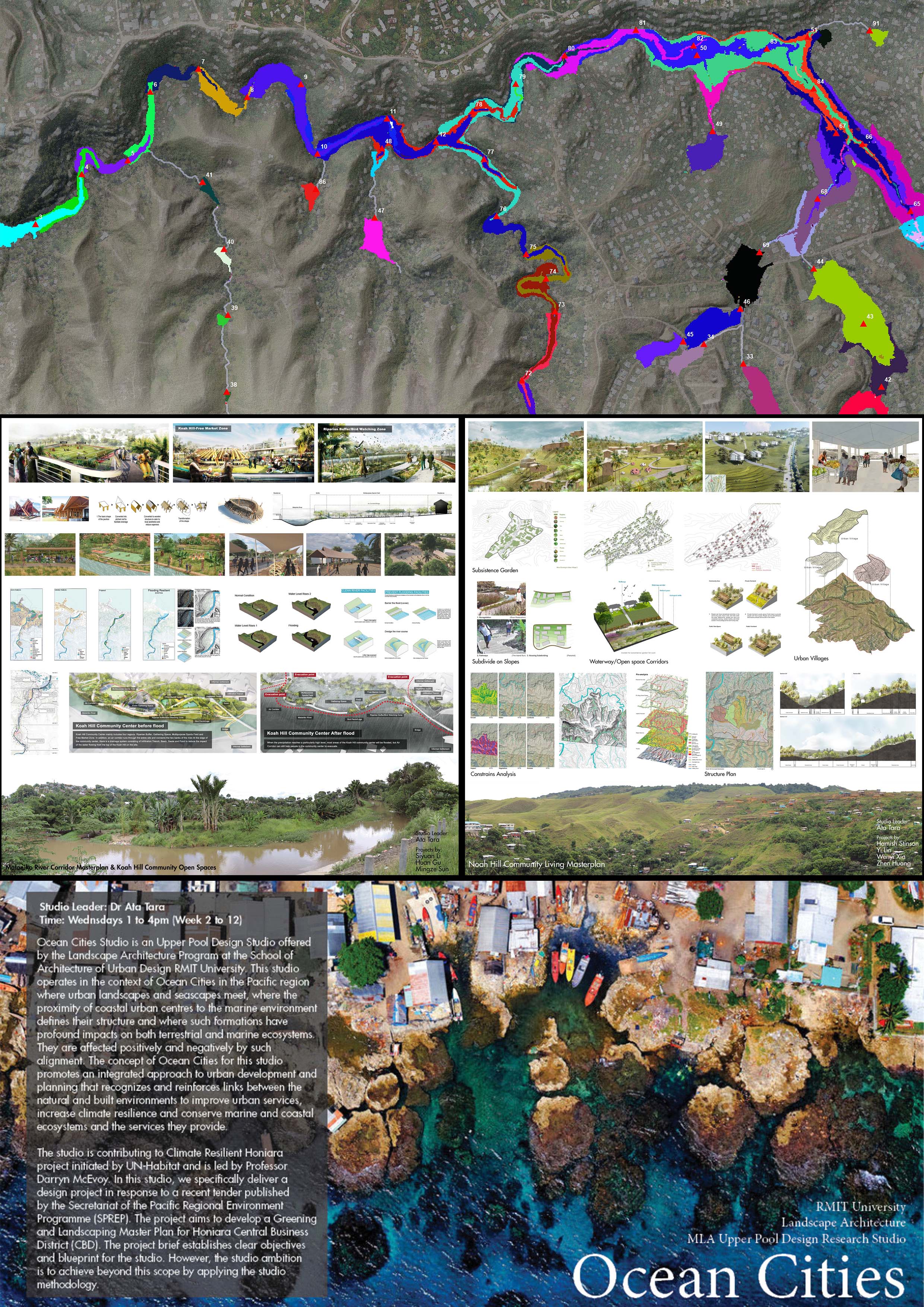14
JulyRMIT Landscape Architecture in SIDS Context
“Landscape architecture might also be the most appropriate design discipline to emphasise some vital beauty of even the worst place, in order to generate initial momenta for transformation processes from slums to worth living neighbourhoods (Rekittke, 2009).”
RMIT Landscape Architecture have been engaged in various ways in the context of Small Island Developing States (SIDS) in the South Pacific. As part of a multidisciplinary team from RMIT University led by Professor Darryn McEvoy, we have contributed to the Climate Resilient Honiara project initiated by UN-Habitat. These contributions vary from the preparation of technical studies to inform Solomon Islands Government decision making on climate change adaptation to research publications by developing new workflows in landscape architecture and leading design studios to inspire and shape the future of the capital city.
Some of our key activities so far:
- Simulation of city-wide climate changes impacts;
- Implementation of Nature-based Solutions in city-wide and site-specific projects;
- Suitability analysis for Relocation of Nation Referral Hospital and evacuation centres;
- Honiara Revive Studio: two design projects were delivered by seven Master students focused on two design projects including:
- Mataniko River corridor & Koah Hill Flood Resilient Community Open spaces;
- Noah Hill New Residential Subdivision.
- Ocean Cities Studio: upcoming MLA design studio in Upper Pool focused on a Greening and Landscaping Master Plan for Honiara Central Business District (CBD).
- Research on the hydrologic and hydraulic performance of landscape: our recent publication in JoDLA 2020, highlights a new workflow to assess the landscape performance to mitigate flooding by implementing Nature-based Solutions in the catchment level:
- Link to the published paper: Designing with Nature-based Solutions to Mitigate Flooding in Mataniko River Catchment, Honiara
- 7 min conference presentation
